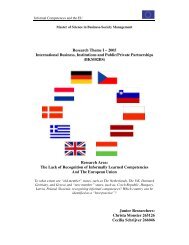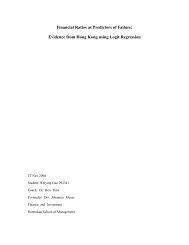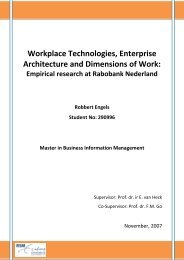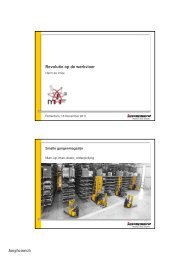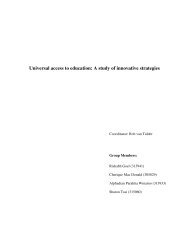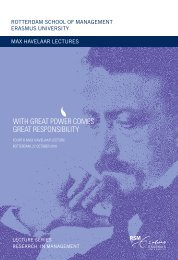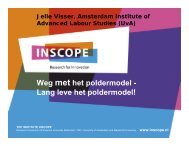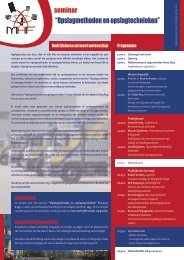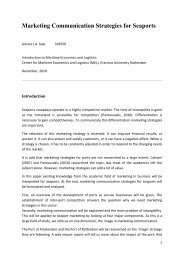here - ERIM - Erasmus Universiteit Rotterdam
here - ERIM - Erasmus Universiteit Rotterdam
here - ERIM - Erasmus Universiteit Rotterdam
You also want an ePaper? Increase the reach of your titles
YUMPU automatically turns print PDFs into web optimized ePapers that Google loves.
A validation Study of House of Quality key performance indicators<br />
Table 12 - Importance rankings How's<br />
4.4 Summary empirical results<br />
4.4.1 Exploratory research<br />
In the first phase of the current research, extensive qualitative research was performed to ensure the<br />
most important characteristics of an online union, according to the members as well as the<br />
employees. Based on the idea of the SERVQUAL model by Parasuraman et al (1988), the explored<br />
items are embodied in a model and clustered into five different dimensions (Table 2). Exploratory<br />
research provides evidence for proposition one; from the original SERVQUAL model only the<br />
dimension “tangibles” was maintained and four new context specific dimensions were established.<br />
The new dimensions are Interaction, Information, Solidarity and Safety. Based on the explored items<br />
a survey was composed to validate the explored performance drivers through a statistically reliable<br />
sample of members of the online union.<br />
4.4.2 Conclusions Quantitative results<br />
The factor analysis tested the structure of the five dimensions established after exploratory research<br />
in phase I. Factor analysis indicated four dimensions instead of five dimensions. The dimensions<br />
interaction and solidarity were fused into one single dimension. The four dimensions showed out to<br />
be reliable by high Cronbach’s alpha’s (>0.7) and strongly correlate to each other. T<strong>here</strong>fore we<br />
decided to adopt the dimensions constructed by Factor analysis as presented in Table 7.<br />
Regression analysis indicated a significant causal relationship between the independent variable<br />
tangibles and the dependent variable overall performance. Although the other independent variables<br />
showed out to influence the overall performance positively, these relationships are not significant.<br />
From this, the regression analysis provides significant evidence for proposition 6. Based on the<br />
adjusted R2, our model explains 24,3% of the variation of the overall performance of the online union<br />
which is in this case acceptable.<br />
69




